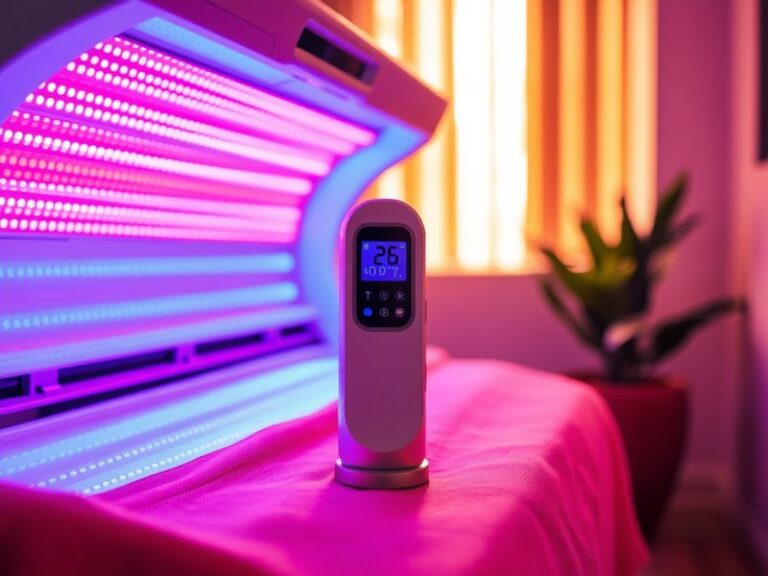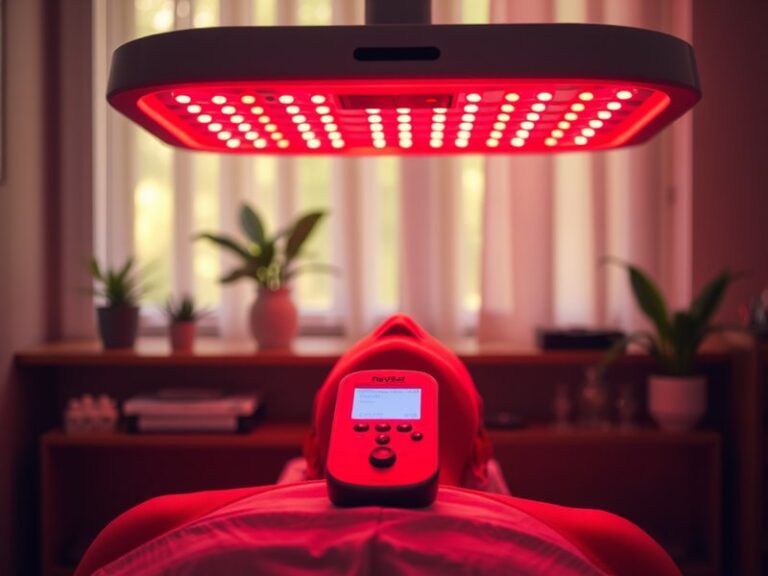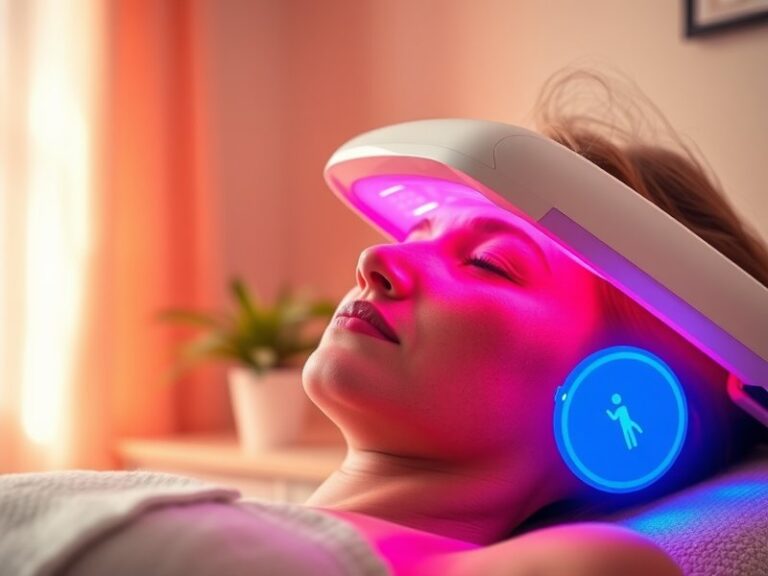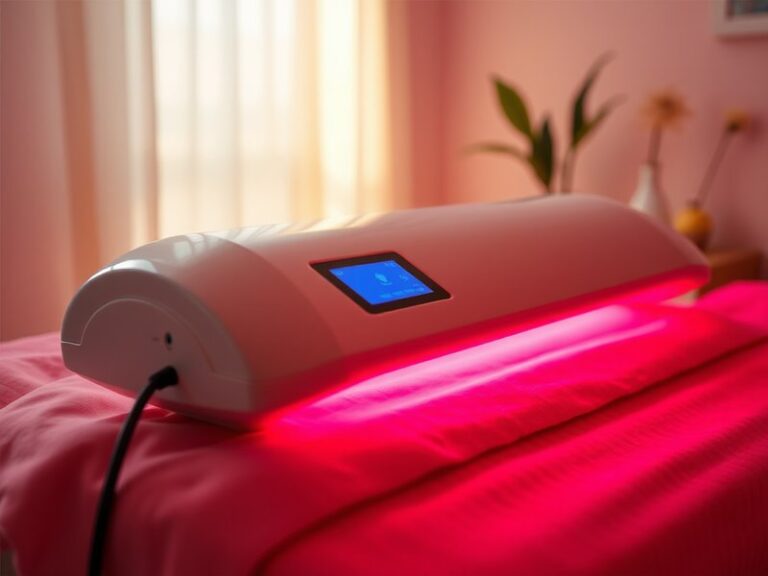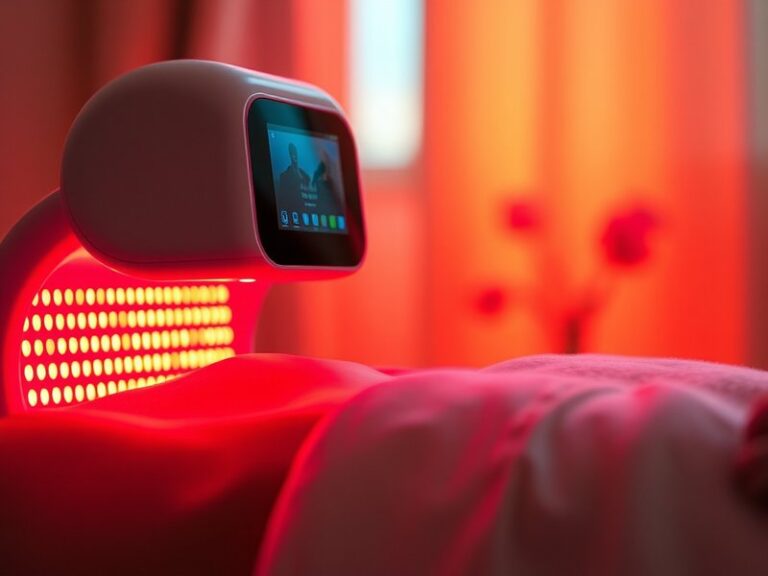How Much Does It Cost To Get Red Light Therapy?
How Much Does It Cost To Get Red Light Therapy?
Have you ever wondered about the expense of utilizing red light therapy and its potential benefits?
This article will guide you through the costs associated with red light therapy, delve into what it entails, its benefits, considerations before undergoing treatment, and alternatives you might want to explore.
See our thorough exploration of Red Light Therapy for Loose Skin?
Key Takeaways
- The cost of red light therapy can significantly vary based on the type of treatment and location.
- At-home devices can be a cost-effective alternative to clinical sessions.
- Understanding the benefits and considerations will help you make an informed decision.
What is Red Light Therapy?
Red light therapy, also known as low-level laser therapy (LLLT) or photobiomodulation, utilizes specific wavelengths of light (usually red and near-infrared) to promote healing, reduce inflammation, and improve skin appearance.
This non-invasive treatment is often employed in clinical settings to treat various ailments including skin conditions, joint pain, and even hair loss. The light penetrates the skin, encouraging cellular processes that enhance tissue repair and regeneration.
Red light therapy is available in several formats, including:
– Professional sessions at clinics, spas, or wellness centers.
– At-home devices such as handheld lasers, face masks, and full-body panels.
What are the Benefits of Red Light Therapy?
Understanding the benefits of red light therapy is essential for evaluating its cost-effectiveness and overall value to your health or skincare regimen.
Skin Rejuvenation
Red light therapy can significantly enhance skin quality by stimulating collagen production, which may reduce signs of aging, such as fine lines and wrinkles.
For instance, many users have reported noticeable improvements in skin texture and tone after consistent sessions.
Pain Relief
This therapy is known to reduce inflammation and pain in various conditions. Studies suggest that red light therapy can alleviate symptoms of arthritis and chronic pain, offering users a drug-free solution to discomfort.
Improved Healing and Recovery
Athletes and active individuals often use this therapy to promote faster recovery from injuries. The stimulation of ATP production in cells can accelerate healing processes, making it a popular choice among sports professionals.
Enhanced Mood and Sleep Quality
Emerging research suggests that red light therapy may also improve mood and regulate sleep patterns by affecting melatonin production. Regular users notice improved sleep quality, contributing to overall well-being.
Is it Possible to Get Red Light Therapy at Home?
Yes, it is entirely feasible to administer red light therapy at home, thanks to the availability of various devices on the market.
What are the Advantages of Home Treatment?
- Cost-Effectiveness: Investing in an at-home device can save you money in the long run compared to regular visits to a clinic.
- Convenience: You can schedule sessions according to your availability without needing appointments.
- Privacy: At-home treatments offer the comfort of privacy, which can be appealing to many users.
What are the Disadvantages of Home Treatment?
- Efficacy: Professional treatments may offer stronger and more targeted solutions than consumer-grade devices.
- Learning Curve: Effective use of home devices often requires understanding how to use them properly to achieve results.
- Initial Investment: While they save money over time, some home devices can be expensive upfront.
What are the Things to Consider Before Starting Red Light Therapy?
Before committing to red light therapy, whether in a clinic or at home, consider the following important factors.
Treatment Frequency
Understanding how often you need to undergo treatment for optimal results is crucial; it typically ranges from a few times a week to several times a day.
Device Quality
If opting for at-home devices, ensure you select reputable brands with good reviews. The effectiveness can vary significantly among different products.
Underlying Health Conditions
Consulting with a healthcare provider is advisable, particularly if you have pre-existing health conditions or are pregnant, to ensure it’s safe for you.
What are the Alternatives to Red Light Therapy?
There are several alternative treatments you may want to consider that can offer similar benefits.
Explore further in Can Red Light Therapy Cause Skin Cancer?
Laser Therapy
Laser treatments use focused light for various skin concerns, like acne and wrinkles, often providing more immediate results but at a higher cost.
Microneedling
This minimally invasive procedure involves puncturing the skin to enhance collagen production, making it an alternative for skin rejuvenation.
Chemical Peels
Chemical peels help refresh the skin’s appearance, remove damaged layers, and can be an option for those seeking superficial skin improvements.
Conclusion: Is it Recommended to Get Red Light Therapy?
Red light therapy can be a highly beneficial tool for many people looking to improve their skin health, alleviate pain, or enhance recovery processes. While the costs can vary based on treatment types and locations, considering both professional and at-home options can lead to informed decisions. As with any health-related procedure, consulting a qualified practitioner is recommended to determine the best approach for your individual needs.
Frequently Asked Questions
What is the average cost of a session of red light therapy?
The cost typically ranges from $25 to $100 per session, influenced by factors such as location, facility, and treatment duration.
Are at-home red light therapy devices effective?
While many at-home devices can provide benefits, the effectiveness often correlates with the device’s quality and the user’s consistency in treatment.
How long does a typical red light therapy session last?
Sessions usually last between 10 to 30 minutes, depending on the treatment area and the specific device or method being used.
Is red light therapy safe?
Red light therapy is generally considered safe with minimal side effects. However, consulting a healthcare professional is advisable for individual concerns.

